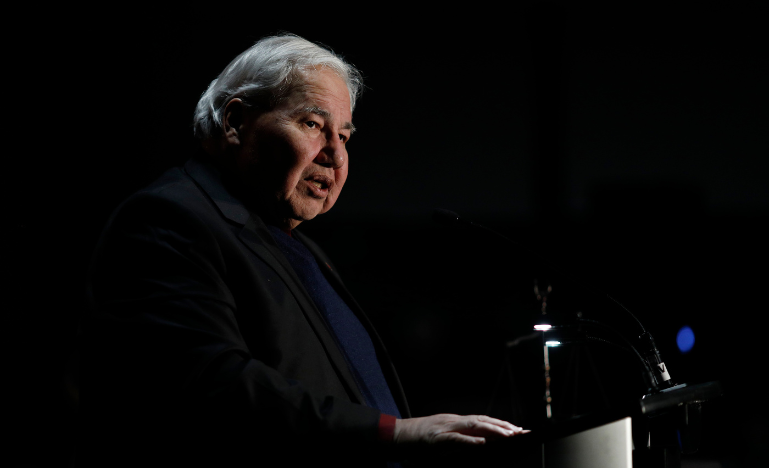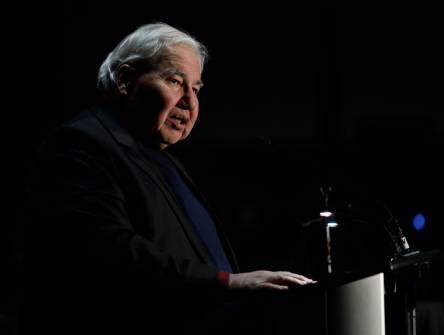Murray Sinclair, a legal giant who almost wasn't
As a young lawyer, he felt like a fraud who didn't belong and nearly left the legal profession

Early in his law career, long before he became revered as a visionary for Indigenous rights and reconciliation, Murray Sinclair almost quit.
“I was torn over my sense of what law was, and what justice and fairness meant,” he said in an online post in 2013.
“I was challenged by my perception of law and the perception of law carried by Elders. They were different — yet the Elders’ perception was as deeply felt and absolutely as valid as anything taught at law school.”
Sinclair, whose death on Nov. 4 at 73 has inspired tributes from across Canada, also wrote that he felt like a “fraud” who didn’t belong in the legal profession.
It was a crisis of confidence and a loss of faith in his direction. It harkened back to childhood and the first time he heard the story of The Ugly Duckling. Like the little creature mocked for not looking like the others, Sinclair keenly felt the shame of poverty, of assumed inferiority, and of otherness that made him want to hide being Anishinaabe.
He was born in 1951 near Selkirk, Manitoba, on the former St. Peter’s Indian Reserve. His Anishinaabe name, Mazina Giizhik, means One Who Speaks of Pictures in the Sky.
He and his three siblings, all under the age of five, were raised by his grandparents and aunts after his mother died.
Sinclair was raised with much love, but the generational effects of residential schools meant that he knew little about his family history and cultural identity.
He gratefully credited Elder Angus Merrick for urging him not to give up his law practice but to approach it differently by learning about what he hadn’t been taught.
“I saw the wisdom of what he told me, and I set out on a journey of discovering Anishinaabe identity, not just for myself, but also for my children,” Sinclair wrote.
That journey would take him to the highest legal and political echelons as Manitoba's first Indigenous judge, senator, chief commissioner of the Truth and Reconciliation Commission, co-commissioner of Manitoba’s Aboriginal Justice Inquiry, and head of the Pediatric Cardiac Surgery Inquiry into the deaths of children at the Winnipeg Health Sciences Centre.
Sinclair became a Companion of the Order of Canada and received the Order of Manitoba, along with numerous honorary degrees, to name just a few accolades.
“The impact of our dad’s work reached far across the country and the world,” his family said in a statement.
“From residential school survivors, to law students, to those who sat across from him in a courtroom, he was always known as an exceptional listener who treated everyone with dignity and respect.”
Harold (Sonny) Cochrane was a young lawyer when he first met Sinclair during a round of golf.
“Of course, I’d seen him in the media from the Aboriginal Justice Inquiry and knew he was a judge. Twenty-five years later, he joined our law firm as general counsel.”
Sinclair worked at the Manitoba Indigenous law firm, then known as Cochrane Saxberg, after retiring from the Senate in 2021. Cochrane says he had an immediate effect, working on the national and provincial class actions the firm is now co-leading, related to treaty annuity cases and provincial child welfare funding.
“Those are some of the biggest legal cases in Canadian history. They’re all meant to address historical wrongs against our people,” he says.
Cochrane notes that the firm has a few other major class actions percolating that Sinclair was also involved in.
“His impact on myself and our legal firm will live on for many, many years.”
The firm rebranded in October as Cochrane Sinclair LLP to honour that influence.
Cochrane says he’ll dearly miss his talks with Sinclair about the law and life. Sinclair sometimes talked about the nasty backlash, including threats, he faced over the years — flak he said was part of being a leader.
“Despite all that, Murray was not a negative person. I don’t think he had a mean bone in his body.”
Kerry Simmons is chief executive officer of the Canadian Bar Association's branch in B.C. and was national president when she presented Sinclair with the CBA President’s Award in 2018.
“I chose him because I wanted more people to know about the work he’d been doing his entire life,” she says, describing Sinclair as the quintessential truth-teller who persevered even when it felt like no one was listening.
“What we all can do now, after his death, is go and read the reports that he has written, and his book. Learn.”
Sinclair’s recently released memoir, Who We Are: Four Questions For a Life and a Nation, urges citizens and Canada as a whole to ask: Where do I come from? Where am I going? Why am I here? Who am I?
Senator Kim Pate recalls how Sinclair often borrowed the phrase, “The truth will set you free – but first, it will piss you off.”
She says he was realistic that true reconciliation and progress on the TRC’s 94 calls to action would take time.
The Commission “showed us the mountain, and it was up to us now to climb it,” Sinclair would say.
Pate will especially miss his humour and kindness.
“He humanized issues. He acted with love, wisdom, and respect, then demonstrated the courage that inspired others to take on issues.”
Many have spoken of Sinclair’s gentle approach in the wake of his passing.
“He was kind, patient and understanding to people like me, who had a lot to learn,” Prime Minister Justin Trudeau said in a statement.
“With his passing, Canada has lost a giant – a brilliant legal mind, a champion of Indigenous rights, and a trusted leader on our journey of Reconciliation.”
While he is well-known for that work, Sinclair also advocated for animals.
Camille Labchuk, executive director of Animal Justice, admired how Sinclair respectfully “dismantled” the arguments of opponents who furiously fought the Ending the Captivity of Whales and Dolphins Act (also known as the Free Willy Bill) before it became law in 2019.
Sinclair would go on to champion the Jane Goodall Act, which became Bill S-15 and is still before the Senate. The proposed legislation would extend legal protections for wild animals in captivity while phasing out elephant captivity.
“All my relations” was a phrase Sinclair often used to express an Indigenous “worldview that includes animals as relations,” Labchuk says.
“His philosophy was that the moral duty that we owe to each other includes the natural world, and it includes animals. It was a very holistic framework to consider how we should morally and righteously act on this planet.”
Sinclair took solace all those years ago from The Ugly Duckling and the thrill of affirmation as it saw its reflection and realized it was a swan.
“I have learned, and am learning, what it means and how to be Anishinaabe,” he wrote.
“I have learned, in the process, that, just as the little ugly duckling was always a beautiful swan, I have always been a beautiful human being, belonging to a group of other beautiful human beings with a proud and distinct history and existence.
Sinclair continued: “The swan does not diminish the duck. They can all still fly together … Accepting and coping with our diversity as humans calls for accommodation, trust and respect. That’s, in fact, what reconciliation is all about.”


